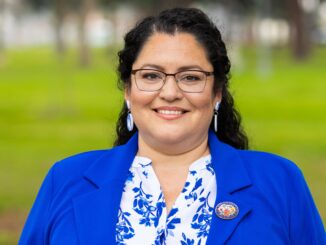
by Anne Stokes
While workplace drug testing has its benefits, unequal testing and enforcement of policies fall disproportionately on employees of color.
In separate studies, both the American Academy of Addiction Psychiatry and the Yale School of Medicine found that minority workers were tested more often than white employees in both blue- and white-collar positions. And according to American Addiction Centers, minority workers were more likely to be fired or reprimanded for positive drug tests than their Caucasian co-workers.
“Employers are most likely to single out people of color for a surprise (drug test),” explains Pamela Lopez, legislative advocate for the California chapter of the National Organization for the Reform of Marijuana Laws, also known as NORML. “If you’re already facing an uphill battle because you’re a person of color, if you’re already facing an uphill battle because you’re a woman of color—and we know Latinas in particular make less than any other demographic group in the workforce—losing a job can be absolutely devastating.”
Through her work with California NORML, Lopez is advocating on behalf of Assembly Bill 2188, a workers-rights bill that would prevent employers from discriminating against those who consume cannabis off the clock.
“With cannabis metabolites testing specifically, there’s an unequal application of the testing,” Lopez says. “So while this bill would protect all people, in application the policy problem that we’re really rooting out is the discrimination that a lot of employers perpetuate against people of color, and women of color in particular, with workplace cannabis metabolites testing.”
And what’s good for cannabis consumers is good for cannabis businesses, which in turn benefit communities throughout the state. Since 2018, legal cannabis sales brought in $3.12 billion in tax revenue. In addition to adding to the state’s general fund coffer, that revenue bolsters social service programs such as law enforcement and youth education programs. It also funds grants to local health departments and nonprofit organizations to support mental health and substance abuse treatment, job assistance and access to medical care in communities disproportionately affected by America’s “war on drugs.”
“I think there would be a lot of really exciting opportunities … not only for communities of color to have great, union-organized jobs, but also for some of our best and brightest to ascend the ranks of CEOs.”
Pamela Lopez
Legislative advocate, California NORML
Cannabis businesses also create jobs. In 2022, the legal cannabis industry saw its fifth year of annual job growth greater than 27%. California’s market is the industry’s leading employer with 83,607 full-time equivalent jobs last year.
As a newly legal market, Lopez notes that it’s possible to shape the paradigm and create a more inclusive industry.
“Because the cannabis industry is relatively new and it’s not so deeply entrenched, … there are not as many cultural barriers around people of color and women of color succeeding in cannabis leadership,” she says. “I think there would be a lot of really exciting opportunities … not only for communities of color to have great, union-organized jobs, but also for some of our best and brightest to ascend the ranks of CEOs.
“Those opportunities are few and far between,” Lopez adds of this moment in the cannabis industry’s history. “We need to create opportunities for some of us to be at the top to reshape the culture and the way that an organization and an industry functions.”




